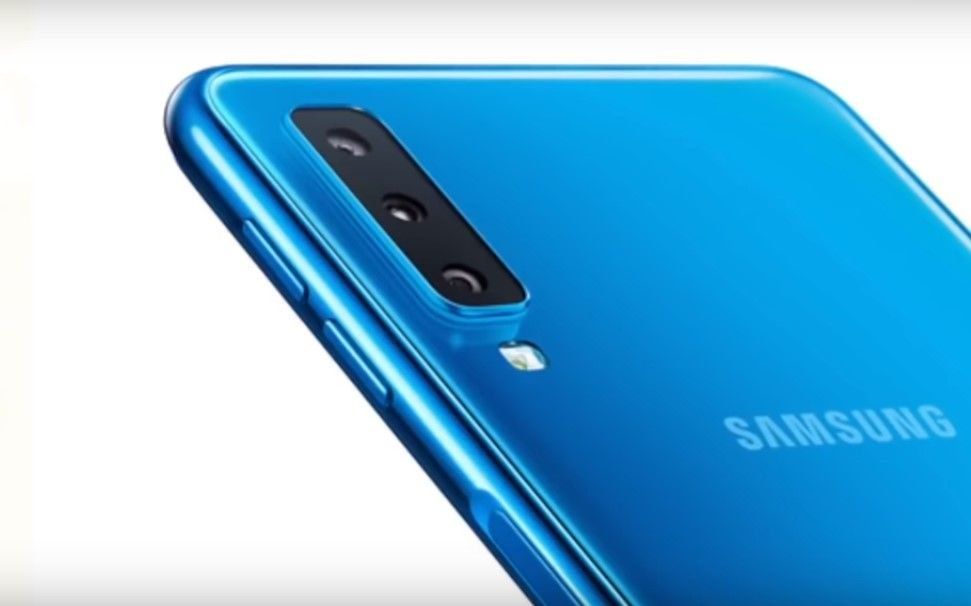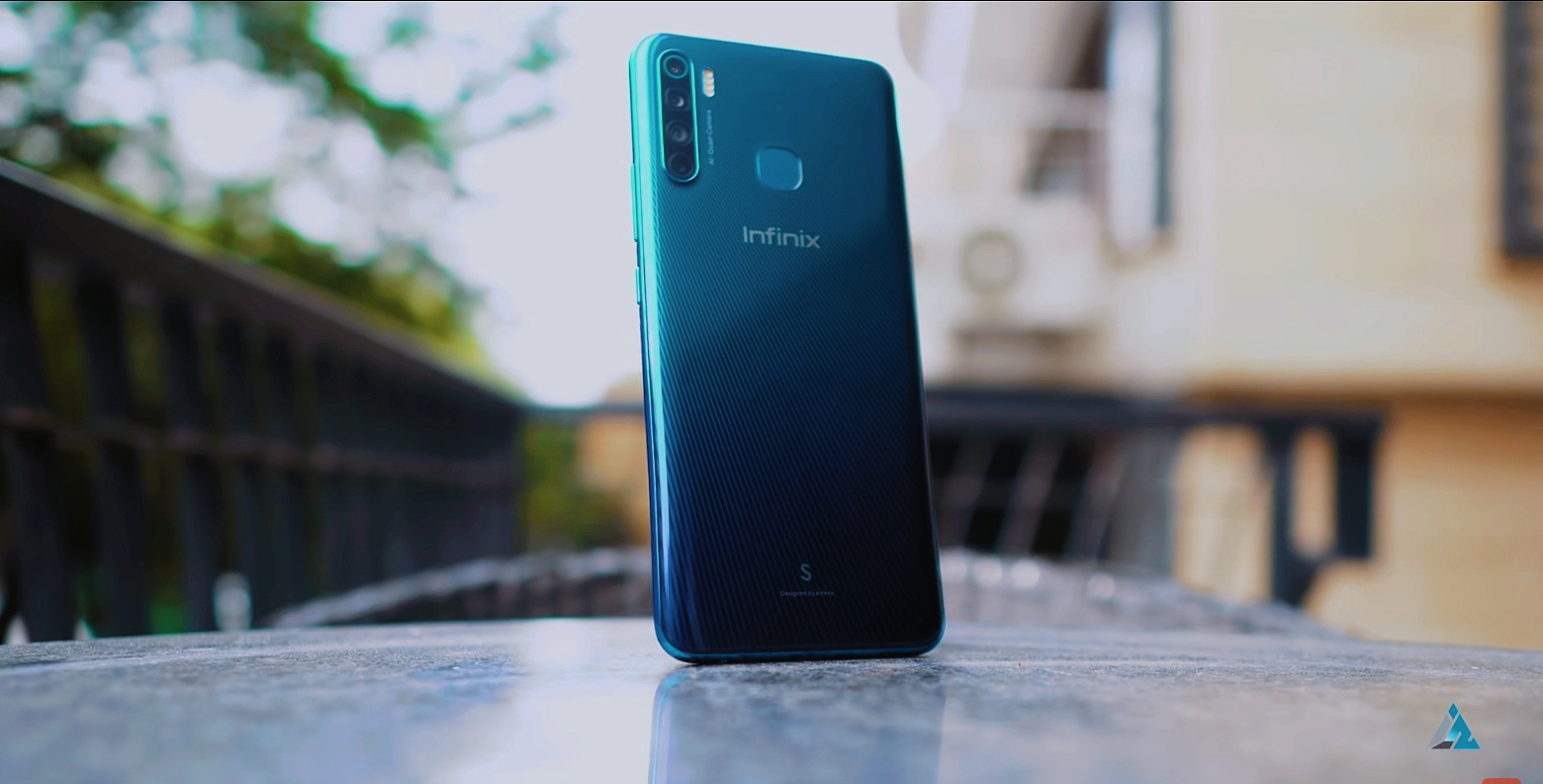Fashion trend - 4 cameras on a smartphone

A smartphone in the hands of a modern user has long ceased to be just a means of communication. One of the most important parameters by which people choose their mobile phone is the camera. And demand, as you know, gives rise to supply, forcing the creation of devices with dual and even triple camera modules. More recently, the question arose whether the limit is three rear cameras, or is it worth waiting for a smartphone with 4 cameras. The wait was short, in October 2018, the Samsung Galaxy A9 appeared with 4 main camera lenses. We will talk about cameras with 4 or more lenses below.
Content
More than one camera, why?
The camera is one of those components of a smartphone that is not so easy to improve. Wider functionality implies an increase in dimensions, which cannot be realized within the boundaries and dimensions of a mobile device.
The increase in the number of built-in lenses made it possible to achieve the goal of improving the photo block. It is important to understand that the module that provides the photographing function remains the same in any case, but there are more sensors that capture the picture, and their tasks are different.
So, in dual cameras, the main sensor is designed to capture a color image in the highest possible quality. And the second one will capture everything that the first one is not capable of. It should be noted that different manufacturers include different tasks in the functionality of the second photo scanner. This can be a constant zoom function, as in the iPhone 7 Plus, or an expansion of space in the frame, as in smartphones from LG. And Huawei has made a duplicate sensor on some flagship models exclusively for shooting monochrome images.

Following smartphones with a dual camera, those appeared on the market, on the back of which three photo lenses flaunt. This is, for example, Samsung's Galaxy A7 version of 2018. Here, in addition to the 24-megapixel main lens, there is an auxiliary one - for measuring the depth of space and a third one - wide-angle. The flagship from Huawei P20 Pro can also boast of three cameras.
4 cameras - a fashion trend?
In fact, the models with a triple rear module noted above are already among those who have 4 cameras, because the fourth one is located on the front side and is most often used for high-quality selfies.
There are 4 cameras among the current carriers and those that place the modules according to the “2 + 2” scheme, that is, two are on the rear side, and the other two sensors are united by the “front camera”. Among these devices is the Nova 2i smartphone from the already mentioned Huawei brand. Auxiliary sensors in this case help to achieve the now so popular bokeh effect.

Phones with 4 cameras
We offer a little closer acquaintance with the photo module of those smartphones that already have 4 photo lenses on their body.
Huawei P20 Pro
The smartphone was announced in March 2018 and immediately stuck in the mind of the consumer as a revolution in mobile photography. The fact is that the reverse side of the case was decorated with three lenses. This device has already given way to the following devices that place cameras according to the 3 + 1 scheme.
In addition to the camera, the smartphone pleases the consumer with the main characteristics that make the gadget quite fast and easy to use. Here and 8-core processor Kirin 970, and 6 GB of RAM along with a built-in 128 GB, and a capacious battery - 4 mAh. About all the characteristics prepared a separate review.
Video review and feedback on using a smartphone:
So the camera. Optics created in tandem with the famous Leica brand. The lenses of the main module have parameters: 40, 20 and 8 MP.
- The main 40-megapixel lens is responsible for creating high-quality color photos, f / 1.8 aperture. It is wide angle.
- The second, 20-megapixel sensor is monochrome, aperture f/1.6. Interestingly, this lens can work both in conjunction with the main and third sensors, and can be turned on separately in the settings with the “Monochrome” command. The latter will allow you to get black and white pictures with a resolution of 20 and 10 MP.
- The third lens is more often used in portrait mode.

The obvious advantage of the camera is full zoom. It is possible to select the shooting scale (1x, 3x, 5x) and the corresponding focal length: 27, 83, 135 mm. The first is the standard one used in most photo modes. But the distance of 83 mm can be considered a classic for portrait shooting.A fivefold increase is achieved, as a rule, with the simultaneous use of 40- and 8-megapixel cameras.
The camera has an artificial intelligence system that allows you to accurately determine the subject of the shooting. There is an option to enable HDR. There are a large number of filters when working with a portrait photo.
AI parameters and settings are not satisfied, then you can select the “Pro” mode and take all the photos, as they say, with your hands, choosing the settings yourself. By the way, for those who are picky about the photo, there is a shooting mode in RAW format.
As for the front camera, the 24-megapixel lens will provide high-quality and clear selfies.
The average cost of Huawei P20 Pro is 50,000 rubles.
Samsung Galaxy A7 (2018)
One of the leaders in the global smartphone industry, the South Korean company Samsung, in the fall of 2018, introduced the updated Galaxy A7 to the Russian market, which, with other decent parameters, received three lenses on the back of the case. In addition to the photomodule, the consumer is attracted by good memory parameters, there are variations for 4/64 GB and 6/128 GB, an 8-core processor, and an excellent 6-inch Super AMOLED display.
A detailed video review of the Samsung Galaxy A7 (2018) smartphone:
So, about the camera. The main photo module has 24 MP (f/1.7) + 8 MP (f/2.4) + 5 MP (f/2.2) lenses.
The main sensor has a Live Focus function that evenly smoothes the background in portrait shots, and there's also the ability to merge pixels in low-light conditions. It is this factor that guarantees good photo quality at dusk and at night.
Additional lenses give a wider viewing angle (8 MP sensor) and measure depth (5 MP), the latter allows you to highlight minor details in the photo.

As for the front camera, there is one lens, 24 megapixels, f / 2.0 aperture, there is an image optimization system in low light.
Both modules are equipped with artificial intelligence, designed to bring the image quality to the ideal. There is LED-backlight, the property of optimizing the shooting scene.
LED flash, equipped in both modules.
The average cost of the 4/64 GB variation is 25,500 rubles.
Huawei Nova 2i
The smartphone has been delighting consumers since 2017. I must say that Huawei Nova 2i does not claim to be the flagship, while demonstrating decent performance. The memory capacity is 4 and 64 GB, the battery capacity is 3340 mAh, the speed in operation is provided by the 8-core Kirin 659.
The real highlight of the device was its camera, or rather four cameras. Accommodation scheme: 2+2.

The main photo module has a leading lens (16 MP, aperture f/2.2), which is responsible for shooting itself and is capable of producing images with a resolution of 4608x3456. An additional sensor sharpens the image, highlights the central object against a smooth background. Its parameter is 2 megapixels.
The front camera works in general on the same principles. The main lens has 13 MP and f / 2.2 aperture, a secondary sensor of 2 MP can blur the background.
Both cameras are equipped with a flash, which guarantees decent photo quality not only in good light conditions, but also in low light conditions.
To get acquainted with these and other characteristics, a separate review.
Video review of the smartphone:
The average cost of Huawei Nova 2i is 17,000 rubles.
Huawei Mate 20 Pro
This smartphone at the time of this writing has not yet appeared on the market of mobile gadgets, its presentation is scheduled for the end of 2018.According to its parameters, the device claims a flagship place among other smartphones from Huawei. So, for example, the smartphone has 8 GB of RAM and 256 GB of internal memory, high performance is guaranteed by the Kirin 980 processor, 8 cores of which operate according to the scheme 2 Big Cortex-A76 (2.6 GHz) + 2 Middle Cortex-A76 (1.92 GHz) + 4 Little Cortex-A55 (1.8 GHz). Battery capacity - 4200 mAh. Similar leadership parameters are also reflected in the photomodule of the device.
Optics is represented by the famous Leica brand. The system by which 4 cameras were placed in a smartphone is 3 + 1.

The three lenses of the main camera are enclosed in a square, the bottom row is two lenses, the top row is a flash LED and a lens. Sensors have distributed functionality among themselves. The main one is a wide-angle lens, 40 MP (f / 1.8), laser autofocus. The second is a monochrome sensor, 20 MP (f / 1.6). The third - gives out 8 MP (f / 2.4) and a triple optical zoom, telephoto lens.
The choice of shooting modes is wide, to improve the result, the Master AI system has been introduced. The smartphone itself recognizes the object, autofocuses, selects the best parameters. An unmistakable choice of macro mode, portrait or any other is guaranteed. There is also a standard set of enhancement features and effects: the much-loved background blur, panorama, and more.
The front camera has one lens, its parameters are 24 megapixels (f / 2.0), 3D technology, artificial intelligence. There is a system of various filters and effects, for example, you can cut out the subject and place it on a different background or highlight the face from a better angle. This feature ensures that you get the perfect selfie photo.
All parameters of the flagship Huawei Mate 20 Pro can be viewed in a separate review.
The estimated cost of Huawei Mate 20 Pro is about 60,000 rubles.
Xiaomi Redmi Note 6 Pro
The novelty of 2018 pleases the user not only with a large screen size (6.26 inches), an impressive battery capacity (4 mAh) and excellent performance test results (117,500 according to An Tutu). The camera in the smartphone is equipped with a 2 + 2 system, i.e. 2 lenses are located in the monobrow and 2 on the back of the device.

If we talk about the rear camera, then the characteristics of each individual lens are not too impressive. So the main sensor is represented by equipment from Samsung and produces 12 megapixels (f / 1.9 aperture), the secondary one - 5 megapixels (f / 2.0 aperture). There is a dual pixel hybrid autofocus system. Flash - LED, powerful. The module is equipped with an artificial intelligence (AI) system, which significantly improves the quality of the obtained images. In general, the addition of all very ordinary characteristics at the output gives decent photos.

Unlike the main photomodule, the parameters of the “frontal camera” are already striking just at the stage of acquaintance. The dual module on the front side is a new phenomenon in 2018 and is far from being found everywhere. At the same time, the main lens has a 20-megapixel sensor (aperture 2.0). Such characteristics alone guarantee excellent selfie shots. However, the secondary sensor, which has 2 megapixels in its arsenal, is called upon to further improve the resulting image.
You can read about these and other parameters of Xiaomi Redmi Note 6 Pro in a separate review.
Video review of the smartphone:
The cost is from 13,000 rubles.
Four main smartphone cameras
As noted above, the limited dimensions of mobile devices do not allow to accommodate a matrix with a lens that could be adjusted. The ability to change the aperture at the time of this writing can boast, perhaps, only the Galaxy S9 from the leader from South Korea Samsung. But even here the steps are not too impressive: F / 1.5 and F / 2.4.
The addition of the main sensor with three additional ones allows you to expand the capabilities of the photomodule of mobile devices.
For a long time, users and experts wondered what the three “satellites” would complement the main lens with. Indeed, as with one additional sensor, each manufacturer has the right to lay down its own functionality.
Among the most realistic options for the functionality of 4 cameras were called:
- The first scanner is the main one, the second one gives an approximation with a telephoto lens; the third is widescreen; the fourth is stuffed with a matrix with an increased number of pixels and high-aperture optics, suitable for shooting at night;
- Another option is to split the zoom size, set one of the four to 3x zoom and the other to 4x,
- The 4th lens can have an infrared sensor and take thermal photos.
The configurations of the listed options may be different. For example, a thermal imager can complement the main camera along with a 2x zoom lens with a larger aperture.
For those variations where a monochrome lens is used as the 2nd scanner, with the introduction of the third and fourth, a telephoto zoom lens and a matrix for creating videos with a high FPS level can be assumed.

Samsung Galaxy A9
In October 2018, at a presentation in Malaysia, among other novelties, the Samsung Galaxy A9 smartphone was presented.It was he who became the first mobile phone in history, the rear camera of which got 4 lenses. Vertically arranged 4 sensors are aesthetically pleasing, do not protrude from the body of the device.

Between themselves, the lenses distributed the functionality as follows:
- The main lens has 24 megapixels, optical stabilization, but it cannot boast of an adjustable aperture, it guarantees bright photos taken even in low light;
- The second sensor is a tele / photo lens, 10 MP, 2x optical zoom;
- The third lens is an 8 MP wide-angle lens;
- The fourth lens - designed to get perfect portraits, got 5 megapixels, the "live focus" function, which means the ability to shift the focus point both during and after shooting.
Video review of the smartphone:
Samsung Galaxy A9 can safely be called a smartphone with 6 cameras!
After all, in addition to 4 lenses of the rear camera, the front panel is decorated with 2 sensors of the front camera, the main lens of which has 24 megapixels, it is possible to take personal animated selfies, changing the image according to the mood of the owner.

All this “photo-madness” is supported by a decent stuffing:
- Processor: 8-core Snapdragon 660;
- Memory: 6 GB - operational, 128 GB - built-in, expandable - up to 512 MB using a memory card, for which there is a separate slot;
- 3800 mAh battery with fast and wireless charging;
- The display has a diagonal of 6.3 inches, a Super Amoled matrix;
- Support for two SIM cards type "nano"
A stylish and productive smartphone with 4 rear cameras will cost about 40,000 rubles.

We can safely say that 4 cameras are a new trend, which are implemented not only in the block version (3 + 1 or 2 + 2), but also on one side of the smartphone.It cannot be argued that the filling that the Samsung Galaxy A9 camera received will be applied to its followers. After all, every manufacturer strives to be better than its competitors. One thing is certain - the quality of the photo in such devices of the future will invariably win.
new entries
Categories
Useful
Popular Articles
-

Top ranking of the best and cheapest scooters up to 50cc in 2022
Views: 131650 -

Rating of the best soundproofing materials for an apartment in 2022
Views: 127688 -

Rating of cheap analogues of expensive medicines for flu and colds for 2022
Views: 124517 -

The best men's sneakers in 2022
Views: 124031 -

The Best Complex Vitamins in 2022
Views: 121938 -

Top ranking of the best smartwatches 2022 - price-quality ratio
Views: 114978 -

The best paint for gray hair - top rating 2022
Views: 113393 -

Ranking of the best wood paints for interior work in 2022
Views: 110318 -

Rating of the best spinning reels in 2022
Views: 105327 -

Ranking of the best sex dolls for men for 2022
Views: 104363 -

Ranking of the best action cameras from China in 2022
Views: 102214 -

The most effective calcium preparations for adults and children in 2022
Views: 102010









